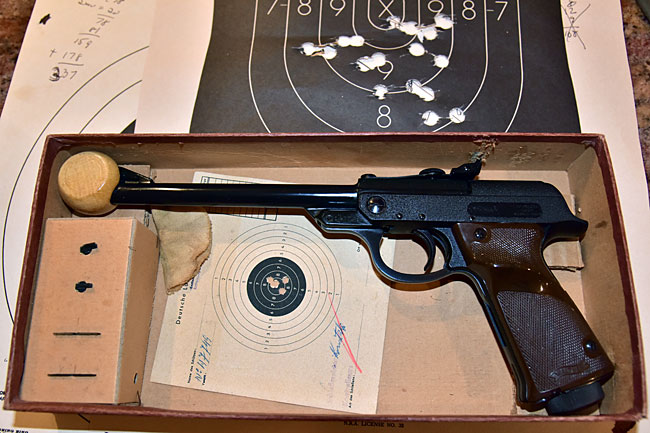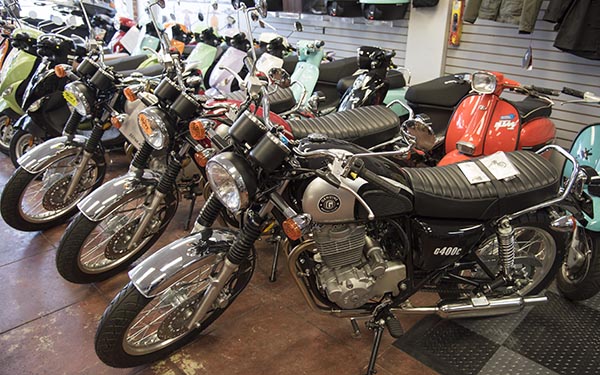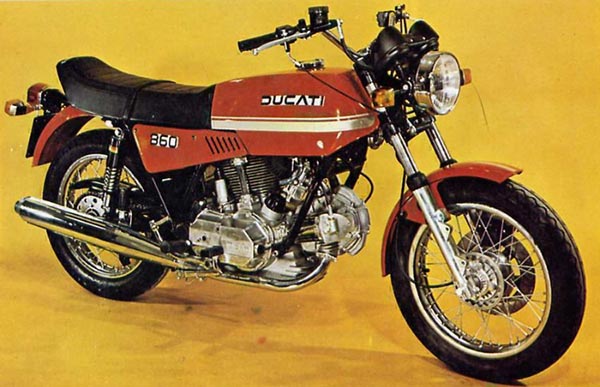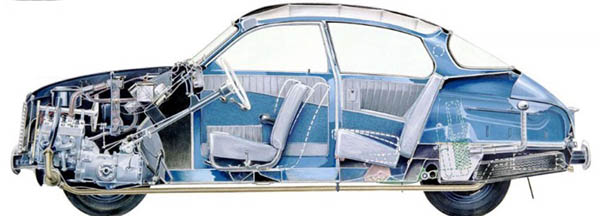When I wrote the CSC blog, I occasionally did a gun piece on it. This is one I did about a pellet gun I still own. I like pellet guns, and you can have a lot of fun with these things. You can set up a 15-ft range in your backyard or in your garage (15 feet is the distance for competitive pellet pistol matches), and shooting a pellet gun is a good way to keep your skills honed when you can’t get to the big boy range. It’s also a good way to pick off a gopher or a bird that wants to start singing at 3:30 in the morning, but we won’t go there. So, for today’s story…my Walther is a pellet gun with a rich heritage and bunch of cool stories. Here are a couple.
 I was channel surfing the other night and I briefly clicked through a rerun of Pawn Stars. You know, that’s the reality TV number about these dudes who run a pawn shop in Las Vegas. I like that show but I blitzed right past it to subsequent channels when something clicked.
I was channel surfing the other night and I briefly clicked through a rerun of Pawn Stars. You know, that’s the reality TV number about these dudes who run a pawn shop in Las Vegas. I like that show but I blitzed right past it to subsequent channels when something clicked.
Wait a second, I thought as my thumb continued clicking channels on autopilot. That can’t be!
So I reversed my path through the zillions of channels we pay for with Direct TV (but never watch). I went back to Rick and the boys in Las Vegas. They were still on the bit that had caught my attention. Son of a gun. Almost literally…son of a gun! I saw what it was that triggered (ah, there it is, the persistent pun) a neuron and made me click back to the Pawn Stars show. Look at that!

What I saw on TV was a Walther LuftPistole Model LP53. Whoa! I actually own one of those! A real Walther air pistol (that’s what “luftpistole” means in German). And there it was…my gun, on TV!
Help us publish…please click on the popup ads!
What further riveted my attention was something I had sort of noticed but never really recognized before. It became clear when the guys on the Pawn Stars show were giving their background spiel on the Walther. I suddenly realized what had captured my attention yet again. It was another thing that clicked! I’d been seeing it for decades and I had never connected the dots, even though I had owned a fine LP53 specimen for the last 50 years.
 At this point, you should mentally key in the James Bond theme song. You know….da da, da dahhh, da da daaaaa. Bond. James Bond.
At this point, you should mentally key in the James Bond theme song. You know….da da, da dahhh, da da daaaaa. Bond. James Bond.
In all those early posters advertising Dr. No, From Russia with Love, and the early Sean Connery James Bond classics (and they were indeed classics; those early Bond movies were magnificent), the advertising had shown Sean holding an LP53. Even though I owned one and shot it extensively, and even though I am a big time James Bond fan (you know, the secret missions and all), it had just never clicked together for me. In all those early advertisements, big bad James Bond, Agent 007, with a license to kill, was posing with an air pistol. Take a hard look at that photo on the left. That’s a Walther LP53 he’s holding. Da da, da daaah, indeed.
So here’s the story. When the Bond franchise was just getting started, the movie folks scheduled a photo shoot in which Bond was supposed to pose with his iconic Walther PPk, the signature secret agent .32 ACP automatic Ian Fleming wrote about. The only problem was that whoever organized the photo shoot had all the props except, you guessed it, the Walther PPk. Whoa. The whole studio, the tux, the photographer, and James Bond himself all dressed up with nowhere to go. They forgot the gun. What to do?
As it turns out, the photographer (a lensmaster named David Hurn) was a pellet gun target shooting enthusiast (me, too, but I’ll get to that in a bit). His target pistol of choice was, you guessed it again, the Walther LP53. The LP53 is a physically large pistol, and it’s a high class, high-ticket item. Real steel, deep blueing, and all the good stuff that makes old guys like me get all dewey-eyed. Hurn ran out to his car and came back with the LP53, and the rest, as they say, is history. Much of the public is completely unaware that their hero, silver screen idol James Bond, posed with a pellet gun. Hell, I didn’t realize it until Rick told the story on Pawn Stars, and I’ve owned an LP53 for most of my life.

That actual pellet pistol, Bond’s stand-in Walther LP53, sold for a staggering $430,000 at auction a few years ago. That’s the story that Rick told while I was watching Pawn Stars. Whoa, hold the presses! $430,000, and I own one of those things!
Well, not so fast. Rick offered the guy $200. $200. Wow, I thought I would be able to retire on that one pellet gun, but not so. Maybe if James Bond had owned the one that was sitting in my closet, but mine had a less famous background. I checked around on the Internet, and $200 seems to be about the going price (as this screen capture from a recent auction shows)…

So, back to my LP53. It’s in immaculate condition. To a collector it would be cool. My Walther has everything except the owner’s manual. That includes the interchangeable sight blades, the wooden cocking plug (the big round wooden thing that fits over the end of the barrel to assist in cocking the gun), the original box, and mine even has the original factory test target. This is mine…


I guess the $200 going rate is a good thing, because I have no plans to retire any time soon and in any event, I’m hanging on to my LP53. It was given to my Dad by one of his shooting buddies (a fellow named Leo Keller, who, like my Dad, was a serious trapshooter). Dad passed it along to me when I was a kid, and I had a lot of fun with it.
One time I walked over to my cousin Bobby’s house holding that gun in my hand the entire way (Bobby lived a mile away from where I did, back in New Jersey). Imagine that…a young teenager like me walking down the road for a mile holding a pistol in his hand. If a kid in New Jersey tried that today, they’d call out half a dozen SWAT teams and maybe even the National Guard. Back then, it was a normal thing to do, and nobody got their shorts in a knot over it.
 Anyway, when I got to Bobby’s house we sat on his back porch shooting the Walther, and then we got the bright idea it might make sense to have something to shoot at. Bobby looked through the trash and found an empty orange juice can. You might remember those cans…they were little (maybe an inch in diameter and about 3 inches tall). The idea was you took the frozen concentrate out and mixed it with water, and voilà, you had orange juice.
Anyway, when I got to Bobby’s house we sat on his back porch shooting the Walther, and then we got the bright idea it might make sense to have something to shoot at. Bobby looked through the trash and found an empty orange juice can. You might remember those cans…they were little (maybe an inch in diameter and about 3 inches tall). The idea was you took the frozen concentrate out and mixed it with water, and voilà, you had orange juice.
Bobby set the can out about 30 feet away and I took a shot at it. Bingo! The can went down.
“Wow, that’s pretty good,” Bobby said. Bobby was about 7 years younger than me (he still is, actually). He was easily impressed back then (today, not so much).
“You ain’t seen nothing yet,” I said. “I’m going to shoot it again and make it stand up.”
Bobby looked at me in amazement. I was his big cousin. He thought what he saw in me was supreme confidence that I could make that shot. You know, that I did this sort of thing all the time. The truth is I had no idea if I could make that shot, but it was such an outrageous thing to claim I had nothing to lose. But….if I made the shot, we’d be talking about it for years.
I took careful aim at the base of the can and gently squeezed the Walther’s trigger. The Walther spit out compressed air and the little .177 pellet connected, catching the orange juice can right at its base. The can spun around, flipped up, whirled around a few more times, and came to rest. Standing. I couldn’t believe it. It was a one-in-a-million shot, and I made it! Pure dumb luck on my part. But I acted as if it was the most natural thing in the world for me to do. That was sometime in the early 1960s. I was back in New Jersey last month and Sue and I had dinner with Bobby and his wife, Sheree. And yes, we talked about that shot.
In researching the background of this unique handgun, I tried to learn what it originally cost. I checked some vintage gun books I own. In my copy of the 1974 Gun Digest, I actually found it. The retail price in 1974 was $59. I had to go through several old books to find it, and as I did so, I was amazed at the artwork on some of them. The 1956 Shooter’s Bible, in particular, stood out. I thought I would scan the cover and include it as a nice touch in finishing this post…

Want to see our other Tales of the Gun stories? Just click here!
Want to make sure you never miss an ExNotes blog post? Sign up for our email updates in the widget you see to the right (if you’re on a laptop) or at the bottom of this post (if you’re on a smartphone). We’ll never give your email to anyone else, and you’ll automatically be entered in our quarterly moto-adventure book giveaway!





 At one time I owned a 1973 BMW R75/5 motorcycle. I traded 1300 dollars and a 1957 small-window VW van for the BMW. The good points about the bike were the suspension and the weight. For a 750cc the bike was lightweight and the thing had plenty of fork travel so it worked pretty good off road. The bad part was the charging system. I never could get the damn thing to electric start due to the battery being low. At the time I tried everything I knew to fix it but the little red discharge light was on constantly.
At one time I owned a 1973 BMW R75/5 motorcycle. I traded 1300 dollars and a 1957 small-window VW van for the BMW. The good points about the bike were the suspension and the weight. For a 750cc the bike was lightweight and the thing had plenty of fork travel so it worked pretty good off road. The bad part was the charging system. I never could get the damn thing to electric start due to the battery being low. At the time I tried everything I knew to fix it but the little red discharge light was on constantly.















 There are only a couple Ducatis that make my Dream Bike fantasy garage and the numero uno, top dog, ultimate Ducati is the springer 860. Unlike most Ducatis, this square-case, 90-degree, V-twin motorcycle eliminates the positive-closing desmodromic valve actuation system and in its place uses a conventional spring-return valve train. To some posers this change negates the whole reason for owning a Ducati. Not in my view: The ability to set valve lash with only a potato peeler on a motorcycle axle deep in cow manure plus the fact that I rarely run any motorcycle at valve floating RPMs means Desmo Ducks hold no advantage for me.
There are only a couple Ducatis that make my Dream Bike fantasy garage and the numero uno, top dog, ultimate Ducati is the springer 860. Unlike most Ducatis, this square-case, 90-degree, V-twin motorcycle eliminates the positive-closing desmodromic valve actuation system and in its place uses a conventional spring-return valve train. To some posers this change negates the whole reason for owning a Ducati. Not in my view: The ability to set valve lash with only a potato peeler on a motorcycle axle deep in cow manure plus the fact that I rarely run any motorcycle at valve floating RPMs means Desmo Ducks hold no advantage for me. Is it wrong to love a motorcycle solely for its looks? Giorgetto Giugiaro’s Jetson-cartoon styling speaks of optimism and a bold stepping-forth into the future. It looks fabulous and slabby and never ages in my eyes. This is one of those motorcycles you can stare at for hours. Why stop there? I’ve never ridden an 860GT so I’m just extrapolating from Ducati’s past performance but I’m sure the thing will handle street riding without issue.
Is it wrong to love a motorcycle solely for its looks? Giorgetto Giugiaro’s Jetson-cartoon styling speaks of optimism and a bold stepping-forth into the future. It looks fabulous and slabby and never ages in my eyes. This is one of those motorcycles you can stare at for hours. Why stop there? I’ve never ridden an 860GT so I’m just extrapolating from Ducati’s past performance but I’m sure the thing will handle street riding without issue. The bikes were available with electric start for the kicking-impaired and after 1975 Ducati exchanged the perfect angular styling for the more traditional, rounded Desmo GT look. It was an error that I may never forgive them for. The springer 860 stayed in production a few more years but Ducati decided to go all in with desmodromic to give their advertising department some thing to boast about.
The bikes were available with electric start for the kicking-impaired and after 1975 Ducati exchanged the perfect angular styling for the more traditional, rounded Desmo GT look. It was an error that I may never forgive them for. The springer 860 stayed in production a few more years but Ducati decided to go all in with desmodromic to give their advertising department some thing to boast about. Maybe I’d organize both cars and bikes by engine type. There would be a Kawasaki 750 triple, a Saab 93 triple, a Suzuki 750 triple next to a crisp, modern Honda NS400. Flathead Row would have a Melroe Bobcat with the air-cooled Wisconsin V-4, and all three Harley flatties: The 45- incher, the Sportster KH and that big block they made (74-inch?). You’d have to have an 80-inch Indian and the Scout along with most of the mini bikes built in the 1970s.
Maybe I’d organize both cars and bikes by engine type. There would be a Kawasaki 750 triple, a Saab 93 triple, a Suzuki 750 triple next to a crisp, modern Honda NS400. Flathead Row would have a Melroe Bobcat with the air-cooled Wisconsin V-4, and all three Harley flatties: The 45- incher, the Sportster KH and that big block they made (74-inch?). You’d have to have an 80-inch Indian and the Scout along with most of the mini bikes built in the 1970s.

 I love a disc-valve two stroke but I’ve never owned one. First bikes in that section will be a bunch of Kawasaki twins (350cc and 250cc). I’d have a CanAm because with their carb tucked behind the cylinder instead of jutting out the side they don’t look like disc bikes should. A Bridgestone 350 twin without an air filter element would be parked next to a ferocious Suzuki 125cc square-four road racer, year to be determined.
I love a disc-valve two stroke but I’ve never owned one. First bikes in that section will be a bunch of Kawasaki twins (350cc and 250cc). I’d have a CanAm because with their carb tucked behind the cylinder instead of jutting out the side they don’t look like disc bikes should. A Bridgestone 350 twin without an air filter element would be parked next to a ferocious Suzuki 125cc square-four road racer, year to be determined.


 To complement the Bobcat I’d have a gas-engined backhoe, something from the 1950’s with all new hoses and tires. I’ll paint it yellow with a roller and then hand paint “The Jewel” in red on both sides of the hood with the tiny artist’s brush from a child’s watercolor set. The backhoe would be a smooth running liquid-cooled flathead with an updraft carburetor and it would reek of unburnt fuel whenever you lifted a heavy load in the front bucket.
To complement the Bobcat I’d have a gas-engined backhoe, something from the 1950’s with all new hoses and tires. I’ll paint it yellow with a roller and then hand paint “The Jewel” in red on both sides of the hood with the tiny artist’s brush from a child’s watercolor set. The backhoe would be a smooth running liquid-cooled flathead with an updraft carburetor and it would reek of unburnt fuel whenever you lifted a heavy load in the front bucket.



